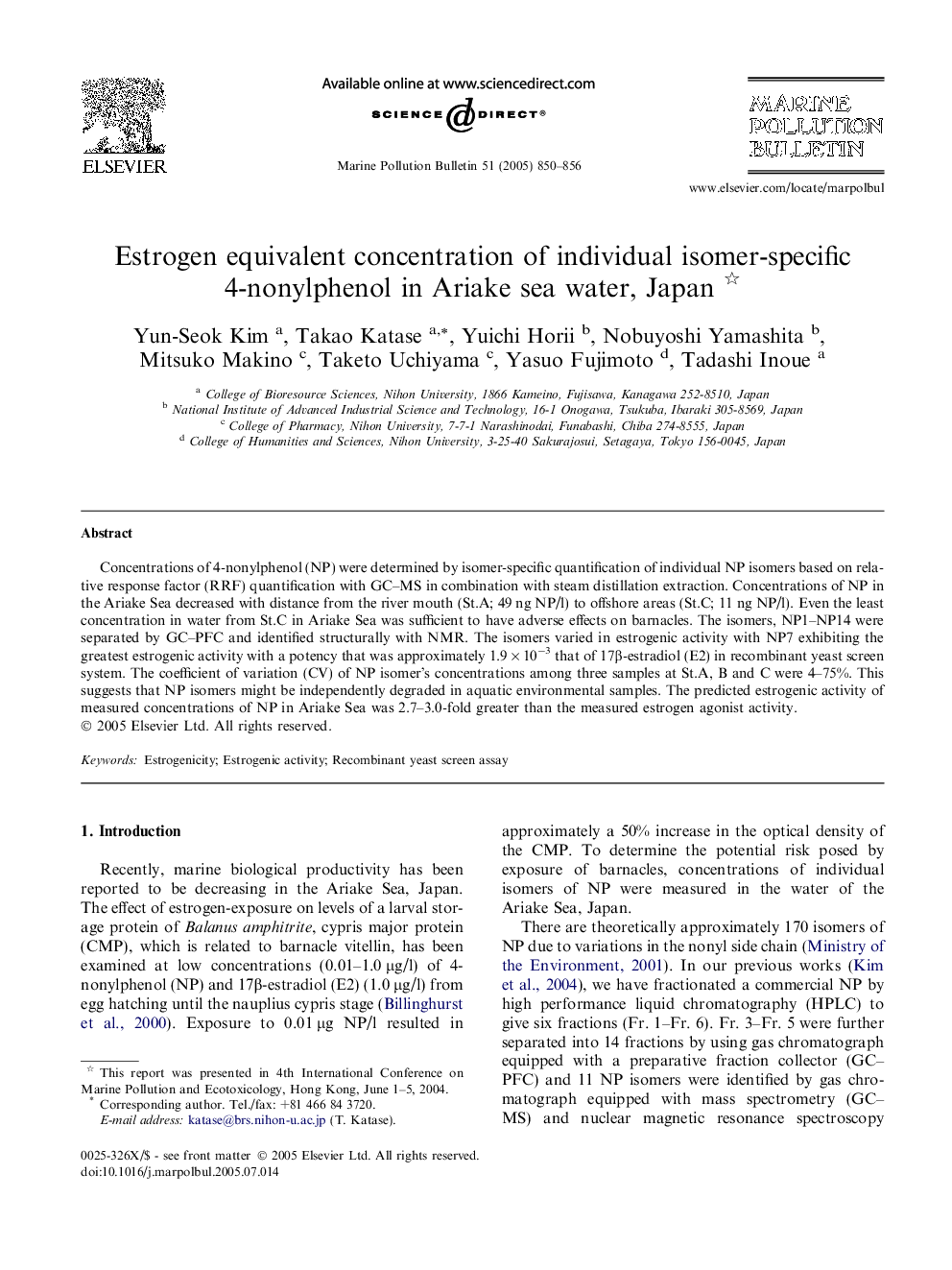| Article ID | Journal | Published Year | Pages | File Type |
|---|---|---|---|---|
| 9465828 | Marine Pollution Bulletin | 2005 | 7 Pages |
Abstract
Concentrations of 4-nonylphenol (NP) were determined by isomer-specific quantification of individual NP isomers based on relative response factor (RRF) quantification with GC-MS in combination with steam distillation extraction. Concentrations of NP in the Ariake Sea decreased with distance from the river mouth (St.A; 49 ng NP/l) to offshore areas (St.C; 11 ng NP/l). Even the least concentration in water from St.C in Ariake Sea was sufficient to have adverse effects on barnacles. The isomers, NP1-NP14 were separated by GC-PFC and identified structurally with NMR. The isomers varied in estrogenic activity with NP7 exhibiting the greatest estrogenic activity with a potency that was approximately 1.9 Ã 10â3 that of 17β-estradiol (E2) in recombinant yeast screen system. The coefficient of variation (CV) of NP isomer's concentrations among three samples at St.A, B and C were 4-75%. This suggests that NP isomers might be independently degraded in aquatic environmental samples. The predicted estrogenic activity of measured concentrations of NP in Ariake Sea was 2.7-3.0-fold greater than the measured estrogen agonist activity.
Keywords
Related Topics
Physical Sciences and Engineering
Earth and Planetary Sciences
Oceanography
Authors
Yun-Seok Kim, Takao Katase, Yuichi Horii, Nobuyoshi Yamashita, Mitsuko Makino, Taketo Uchiyama, Yasuo Fujimoto, Tadashi Inoue,
